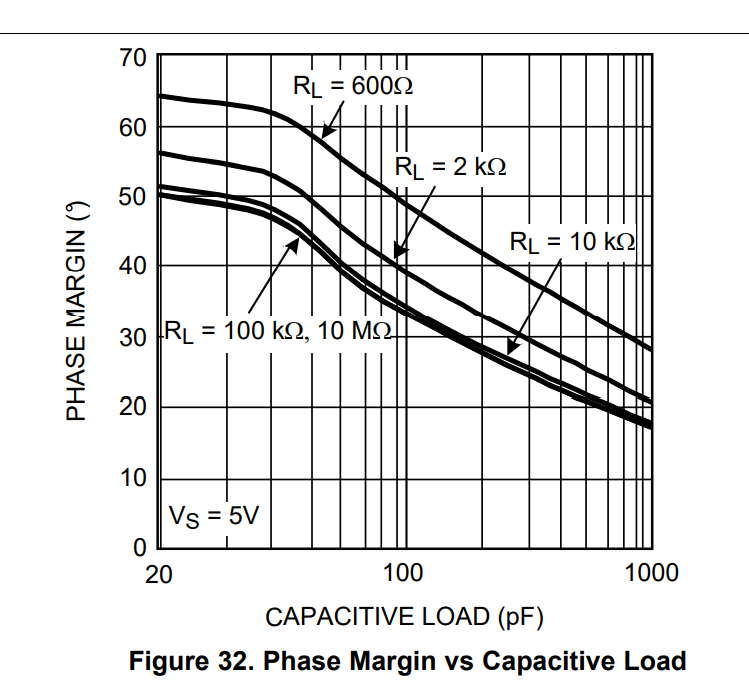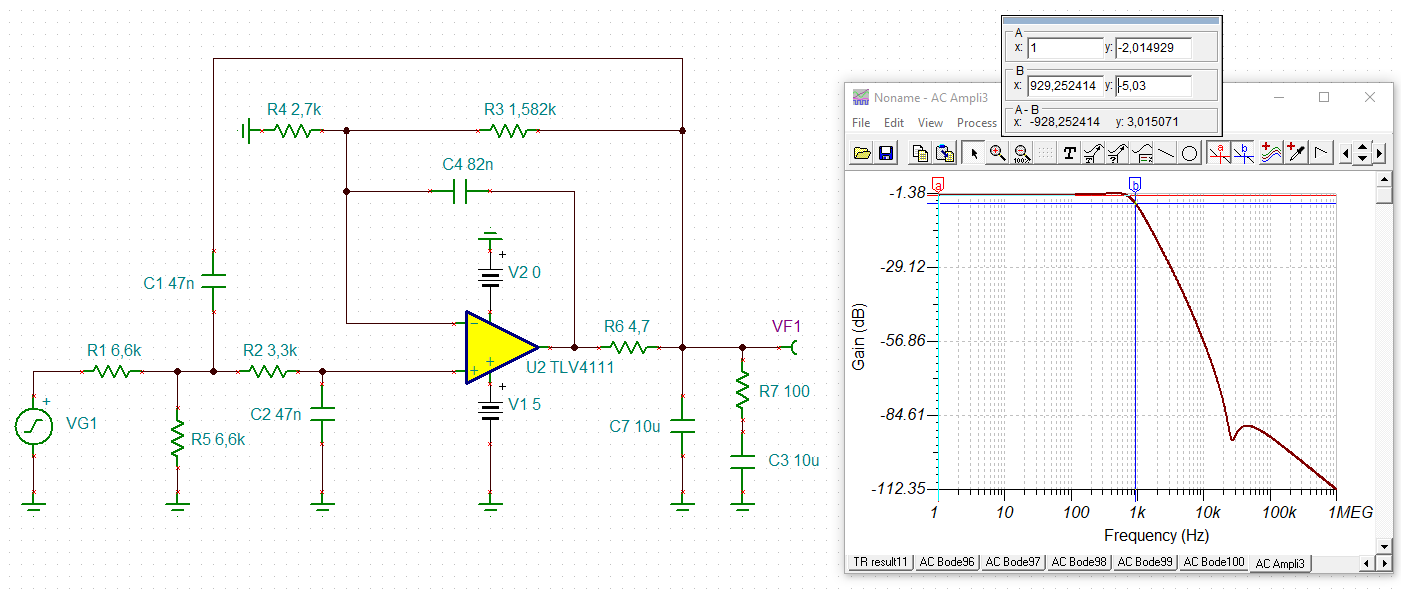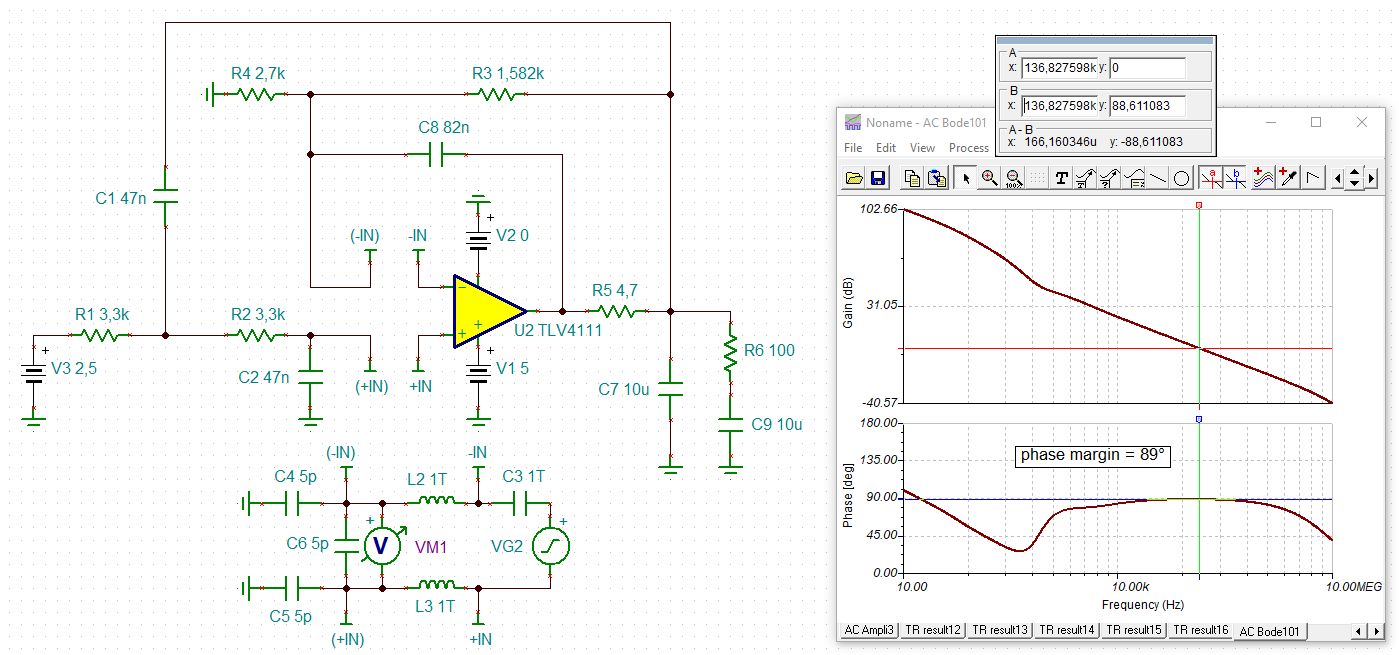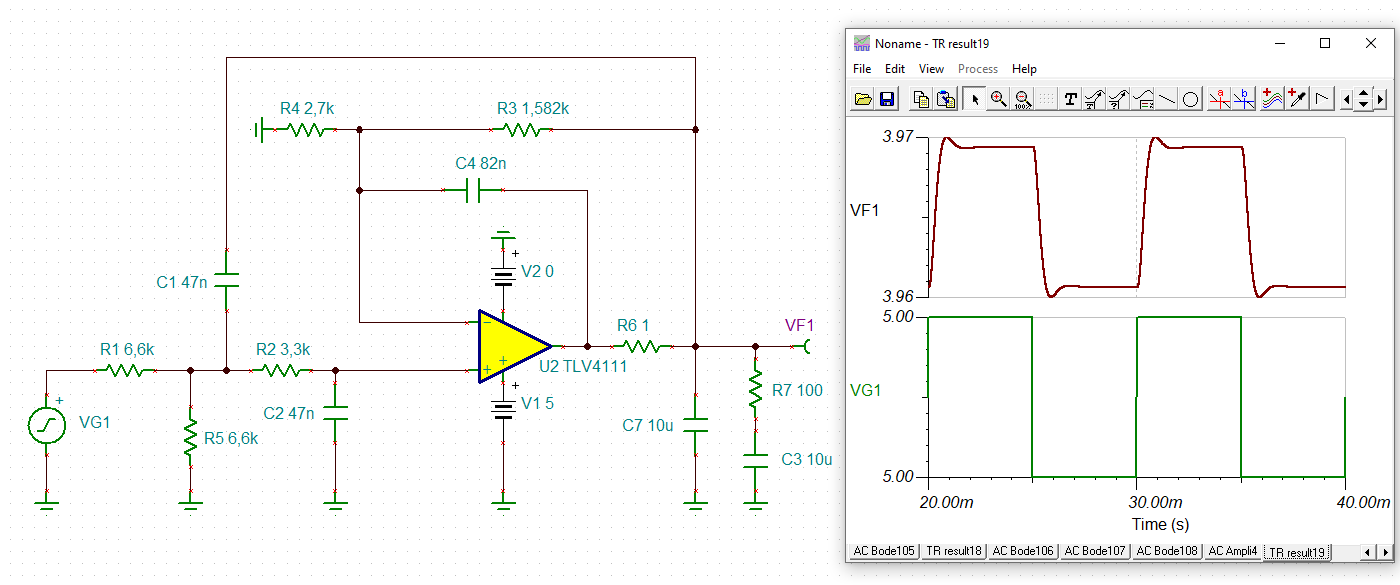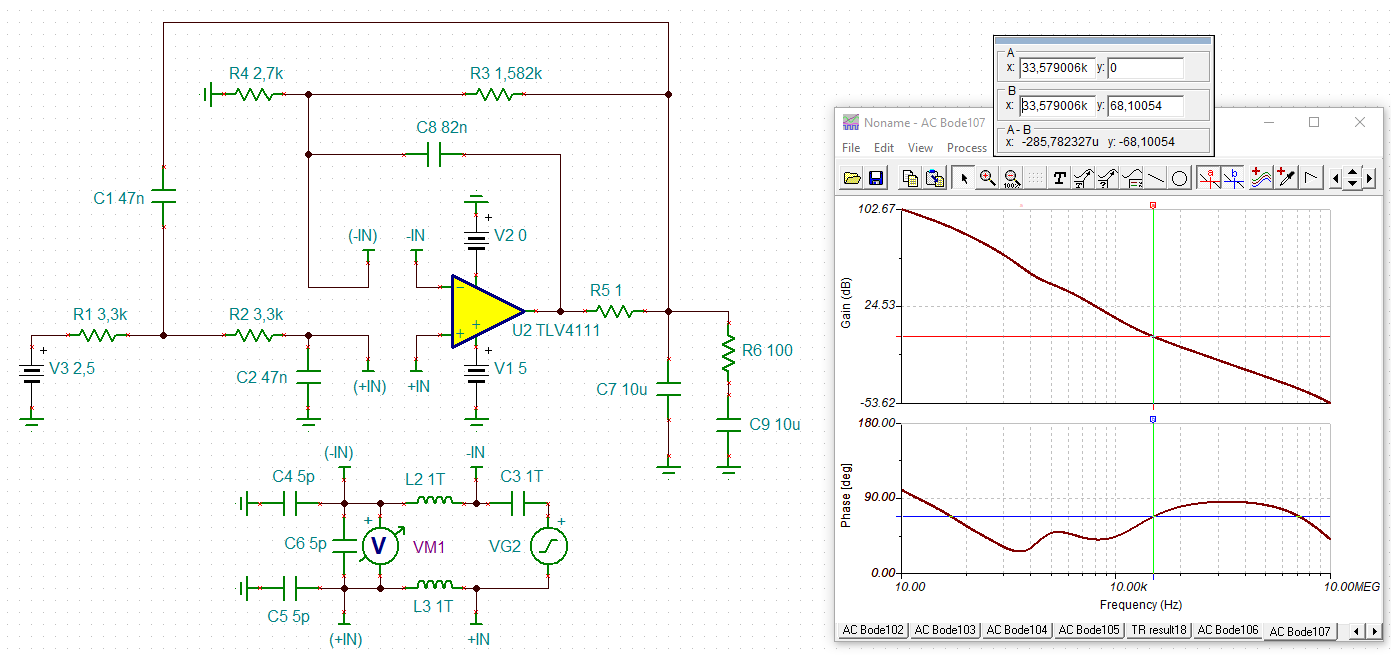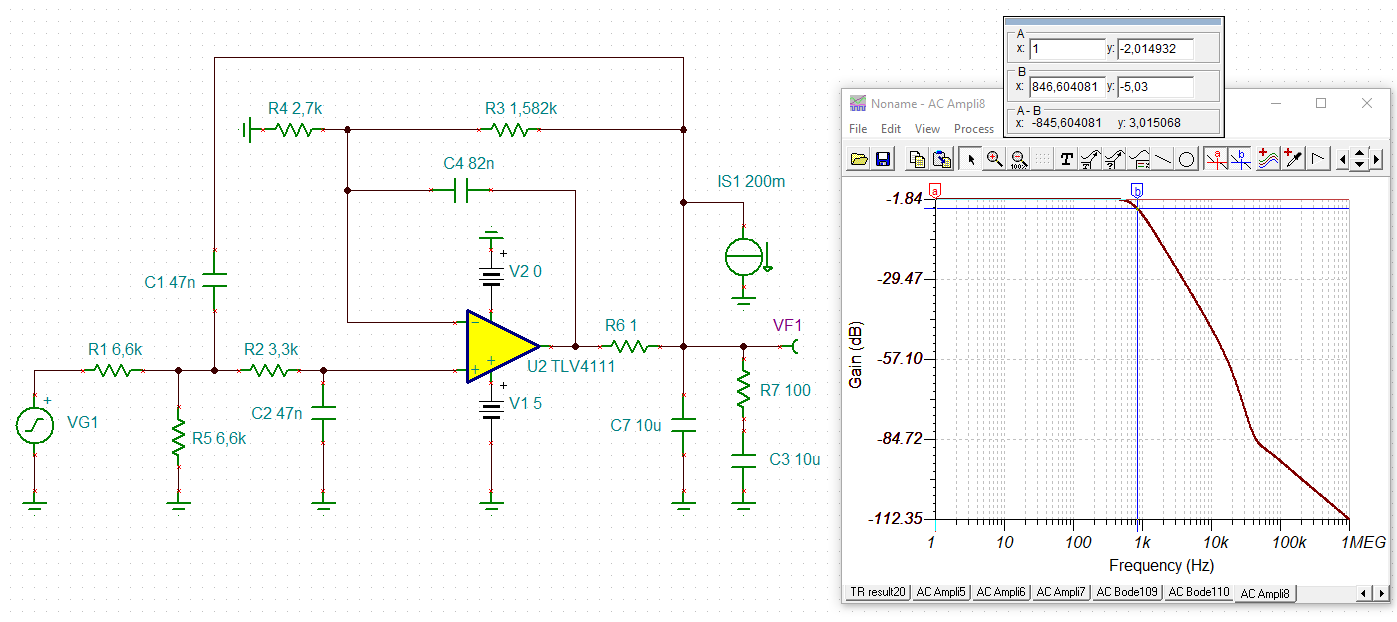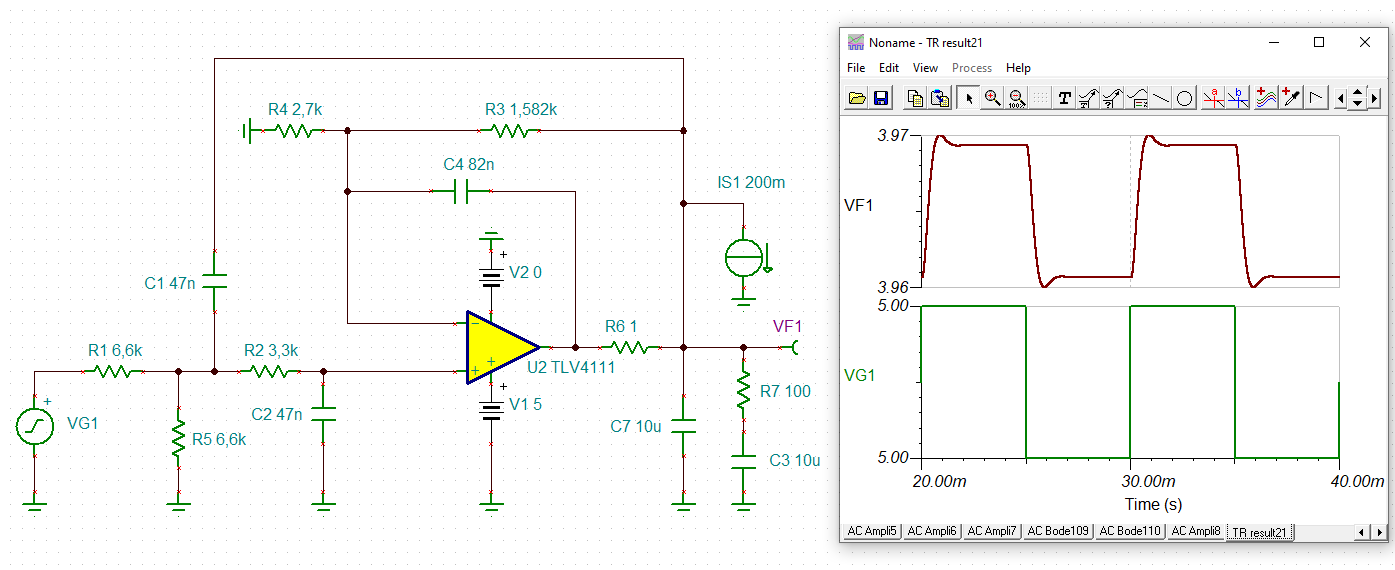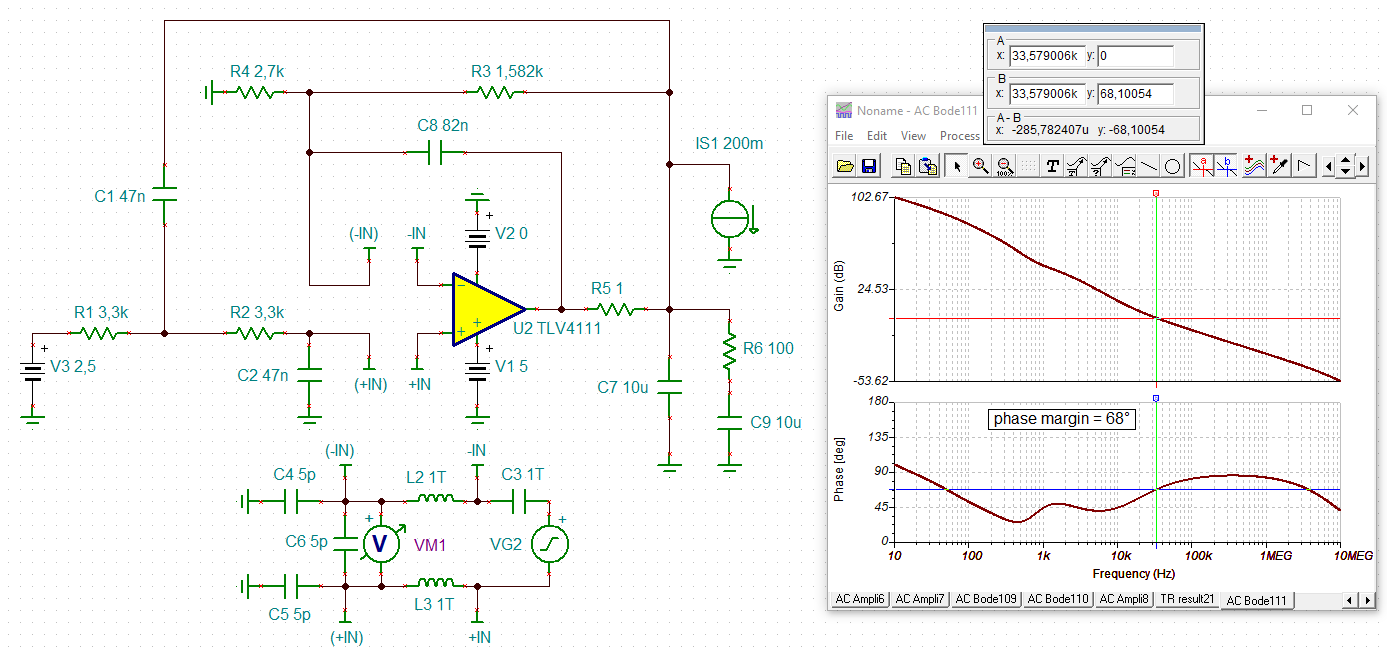Other Parts Discussed in Thread: TINA-TI, LM7332
Hi,
I'm interested in using the TLV4112 amplifier (for its high output current) in a Sallen Key low pass filter unity gain configuration. The cutoff frequency is 1kHz.
The op-amp is stable in the unity gain, but cannot drive "unlimited" capacitance. I have a capacitor in the 10-20uF range downstream from the output of the filter. My question is, will the design be unstable because of the large amount of load capacitance? How would I go about verifying the stability of the design?
Thanks.


